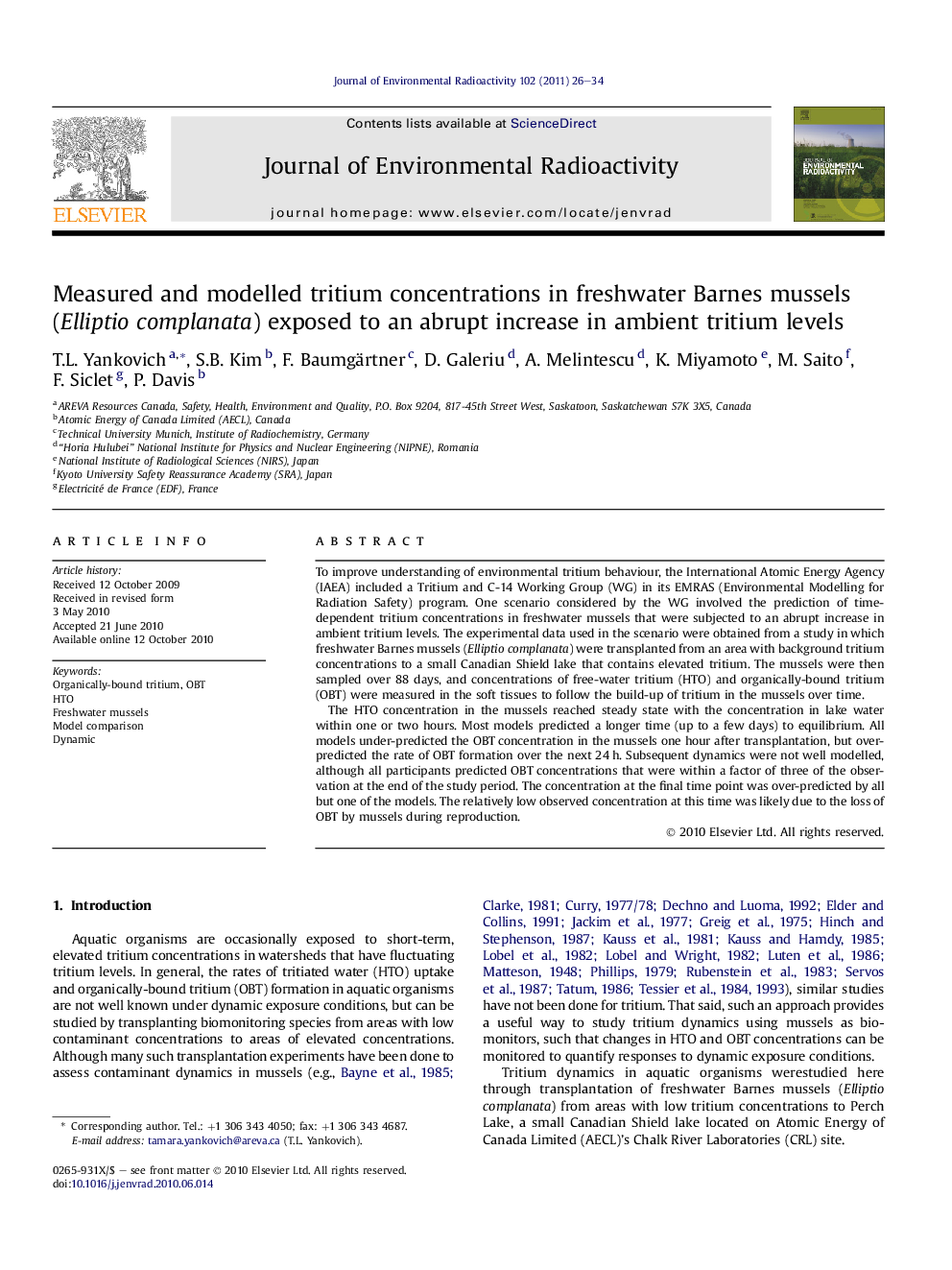| Article ID | Journal | Published Year | Pages | File Type |
|---|---|---|---|---|
| 1738774 | Journal of Environmental Radioactivity | 2011 | 9 Pages |
To improve understanding of environmental tritium behaviour, the International Atomic Energy Agency (IAEA) included a Tritium and C-14 Working Group (WG) in its EMRAS (Environmental Modelling for Radiation Safety) program. One scenario considered by the WG involved the prediction of time-dependent tritium concentrations in freshwater mussels that were subjected to an abrupt increase in ambient tritium levels. The experimental data used in the scenario were obtained from a study in which freshwater Barnes mussels (Elliptio complanata) were transplanted from an area with background tritium concentrations to a small Canadian Shield lake that contains elevated tritium. The mussels were then sampled over 88 days, and concentrations of free-water tritium (HTO) and organically-bound tritium (OBT) were measured in the soft tissues to follow the build-up of tritium in the mussels over time.The HTO concentration in the mussels reached steady state with the concentration in lake water within one or two hours. Most models predicted a longer time (up to a few days) to equilibrium. All models under-predicted the OBT concentration in the mussels one hour after transplantation, but over-predicted the rate of OBT formation over the next 24 h. Subsequent dynamics were not well modelled, although all participants predicted OBT concentrations that were within a factor of three of the observation at the end of the study period. The concentration at the final time point was over-predicted by all but one of the models. The relatively low observed concentration at this time was likely due to the loss of OBT by mussels during reproduction.
